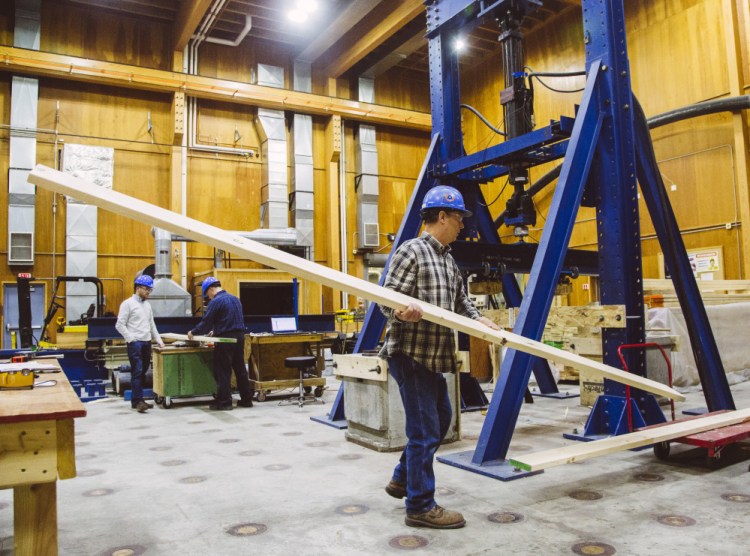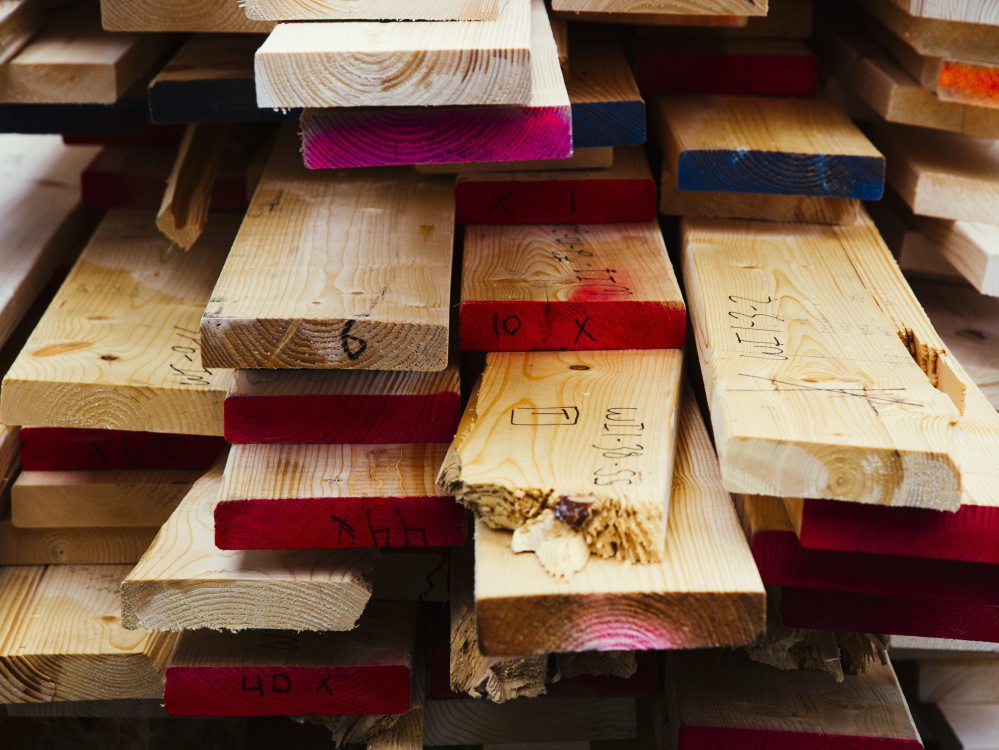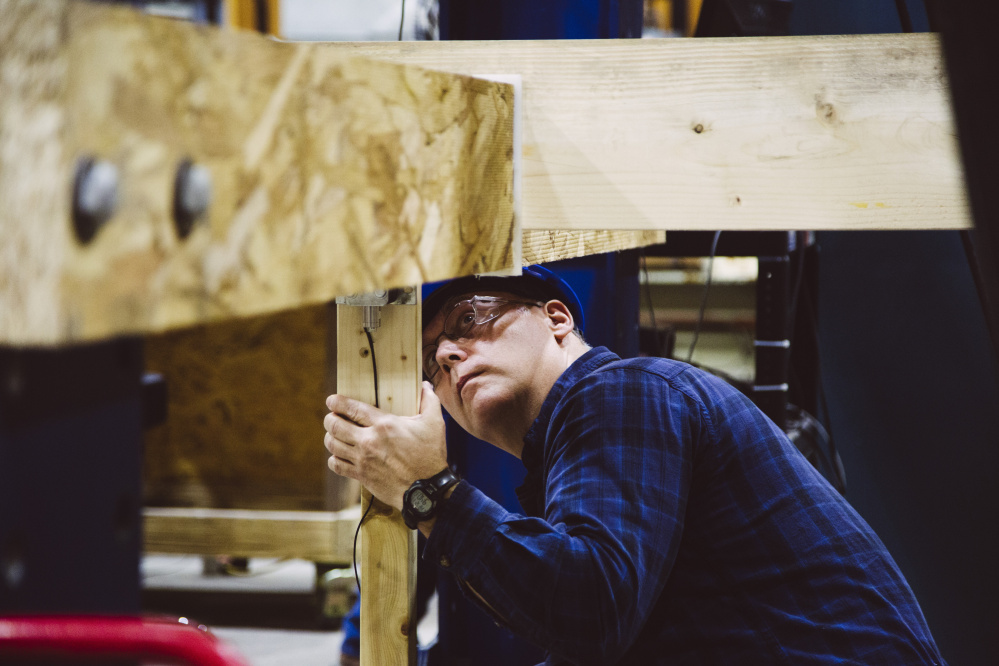Members of Maine’s forest products economy are hailing the certification of Norway spruce as construction lumber – the first new species to be added to the list of approved lumber in about 80 years.
The pretty evergreen with its gently sloping boughs was named to the list after five months of testing at the University of Maine. Researchers tested more than 1,300 pieces of lumber milled from Norway spruce grown in Maine, Vermont, New York and Wisconsin. On Oct. 20, the American Lumber Standards Committee approved the inclusion of Norway spruce for home construction and industrial applications.
“This is great news for Maine loggers,” said Dana Doran, executive director of the Professional Logging Contractors of Maine. “This will open new markets for (Norway spruce) not normally available to us.”
Researchers at UMaine’s Advanced Structures and Composites Center in Orono tested Norway spruce for strength, durability and other structural qualities in partnership with the Northeastern Lumber Manufacturers Association.
“This is a momentous occasion for the building industry,” Jeff Easterling, president of the lumber manufacturers association, said in a news release announcing the designation. “The addition of a new species hasn’t happened in almost a century, and it’s been a very exciting year as we’ve worked to shepherd it through testing and bring it into the mainstream.”
Landowners, loggers, lumber mills, retailers and builders all are expected to benefit from being able to use lumber from Norway spruce trees. Maine’s sawlog harvest has historically been dominated by spruce and fir trees, primarily white and black spruce and balsam fir. Combined, they represented 41 percent of the 905 million board feet of sawlogs harvested in Maine in 2014, according to data from the Maine Forest Service. Data on how much Norway spruce is in Maine’s 17 million acres of forestland was not immediately available from the university or the Maine Forest Service.
Doran said the species had been harvested previously for pulpwood, but since the closure of the last spruce-fir pulping operation at the defunct Madison paper mill, there’s been no viable outlet for the species.
“This is a step in the right direction,” Doran said. “Now we will be able to get the highest and best use from a sawlog.”
Pulp is generally considered the lowest commercial use of wood, while large-diameter trees harvested for high-quality lumber, such as prime veneers, is the highest.
Doran said the inclusion of Norway spruce as an approved building material will give a boost to his membership, which has been rocked by the closure of five Maine paper mills over the past two years.
“We’re really excited about it,” he said. “A new market is great.”
TREES WITH ROOTS IN THE DEPRESSION
The UMaine team, which tested lumber from October 2015 through February of this year, derived design values for Norway spruce, including bending, tension, shear and compression. It also wrote the final report that the lumber manufacturers association submitted to the American Lumber Standards Committee, according to the release.
The Norway spruce tested at UMaine came from some of the estimated 3 billion trees of various species planted around the country during the Great Depression by the Civilian Conservation Corps, an effort of President Franklin D. Roosevelt’s to put people back to work. The CCC workers planted the trees to reclaim abandoned farmland, and used primarily Norway spruce in the Northeast and Great Lakes region, according to Easterling.
In Maine, most of the trees were planted in Aroostook County, but there are significant plantations of the non-native species in nearly half a dozen Maine counties, according to his organization’s research.
While builders in Europe have used Norway spruce for ages, it was off-limits to the U.S. construction industry because the proper strength tests were never conducted on the trees grown in this country.
Norway spruce is now approved for use in home construction areas such as wall studs, floor and ceiling joists, and industrial applications. On its home page, the lumber manufacturers association said builders will not be able to tell the difference from traditional spruce once the lumber is cut.
Stephen Shaler, associate director of the UMaine Composites Center and director of the School of Forest Resources, says UMaine students, staff and faculty benefited from the strong collaboration with the forest products industry for this research.
“It has inspired students to pursue careers in the field and we look forward to a continued partnership with NELMA and the forest industry,” he said in the release.
The university will hold a news conference and demonstration at 10:30 a.m. Wednesday at the Advanced Structures and Composites Center to release further details about the economic impact of Norway spruce’s approval as construction-grade lumber.
Carol Coultas can be contacted at 791-6460 or at:
ccoultas@pressherald.com
Twitter: carolacoultas
Send questions/comments to the editors.





Success. Please wait for the page to reload. If the page does not reload within 5 seconds, please refresh the page.
Enter your email and password to access comments.
Hi, to comment on stories you must . This profile is in addition to your subscription and website login.
Already have a commenting profile? .
Invalid username/password.
Please check your email to confirm and complete your registration.
Only subscribers are eligible to post comments. Please subscribe or login first for digital access. Here’s why.
Use the form below to reset your password. When you've submitted your account email, we will send an email with a reset code.